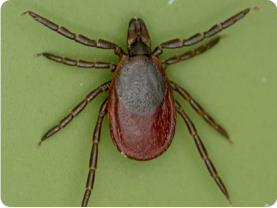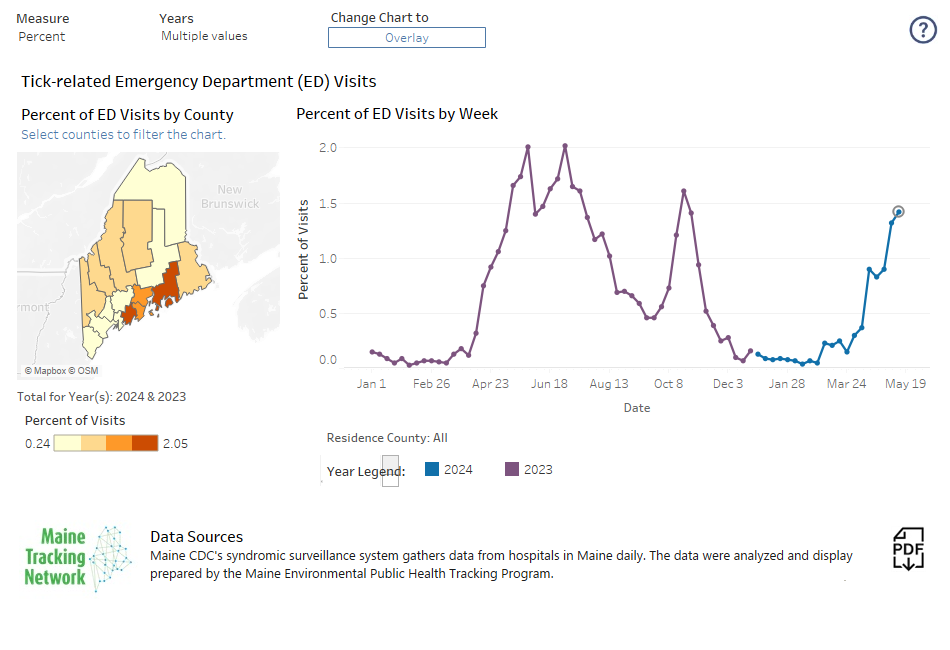Tickborne Diseases
Maine has high rates of tickborne diseases. Lyme disease, anaplasmosis, and babesiosis are the most commonly reported tickborne diseases in Maine. Tracking the spread of tickborne diseases allows communities, state officials, and healthcare providers to prepare strategies to prevent the spread of these diseases. This data helps individuals educate residents about the need for early detection and treatment to prevent the progression to the debilitating late-stage of these diseases.
What data are available?
Maine tracks the following measures associated with tickborne diseases:
- Near real-time data
- Year-to-date case counts
- Daily emergency department visits
- Historical cases (annual summaries)
- Anaplasmosis incidence (caused by the Anaplasma phagocytophila bacteria)
- Babesiosis incidence (caused by the Babesia microti parasite)
- Lyme disease incidence (caused by the Borrelia burgdorferi bacteria)
Where can I find more information about tickborne diseases?
- Learn about tickborne diseases and get resources for Maine parents, providers, and educators from the Maine Center for Disease Control and Prevention.
- Visit the U.S. Centers for Disease Control and Prevention for national information on Lyme disease.
- Submit a tick for identification through the University of Maine Cooperative Extension Tick ID Lab.

